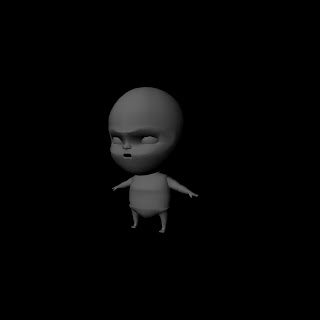Nicholas Hodgson 1113154 176004: Intellectual Entrepreneurship and Innovation Management
1A: (1198 words excluding bibliography)
The two most influential entrepreneurs I have choses are Arnold Schwarzenegger and Steve Jobs. These two men have greatly changed the way I think and act in more ways than one. All throughout their lives, these two men have faced hardships and many hurdles and they continuously break down the barriers in front of them. They both have a very unique and individual ‘never say die’ attitude to life and its possibilities.
Arnold Schwarzenegger is predominantly known for his bodybuilding career however, many people fail to realize that Arnold was actually a millionaire before he even considered Hollywood at the age of 22. Arnold represents pure determination, and this determination he applies to every aspect of his life. All throughout his life to the present day he was an unstoppable force. He set ridiculous goals for himself and conquered all of them. He applied the same mentality he had for body building into his business ventures also. In 1968 Arnold and a friend founded a bricklaying business anticipating the demand following the Paris earthquakes. Following the bricklaying business the profits were invested in a mail order service where fitness equipment and instructional tapes were distributed. He also invested in property in his early 20’s which has led to him owning hundreds of millions of properties to this day. (Carlos Lim, 2011) Arnold quotes, “The mind is the limit. As long as the mind can envision the fact that you can do something, you can do it, as long as you really believe 100 percent.” (Michael E. Angier, December 1, 2004) This singular quote truly has altered my mentality towards life in more ways than one. It shows that literally anything is accomplishable no matter how impossible the goal may seem as long as you want it enough.
Arnold solely has taught me to crave perfection in every aspect in life. If I do not put all my efforts into something I feel ashamed and disappointed in myself. After all, I am representing myself and only myself in this world, and my efforts in life are what define and reflect who I am as a person. Another important philosophy of Arnold’s is this, “Strength does not come from winning. Your struggles develop your strengths. When you go through hardships and decide not to surrender, that is strength.” (EDBERG) This quote of Arnolds made me realize a long time ago that life is not perfect; it is the imperfections and hardships of life that molds who a person is. When you get knocked down, get back up again and realize your mistake and improve upon yourself. Arnold has taught me that determination and perseverance is something that should be applied to everything in life. I have learnt a new found respect for myself and my potential. We all have inner power to drive us forward but we must visualize success before we can reach success.
Arnold completely altered my work habits by making me realize that while “I’m out drinking partying, someone out there in the world is working harder than me, and someone is getting smarter than me.” (Schwarzenegger, 2009) I have focused a lot of my energy learning 3d design, spending more than 4 hours a day studying it in my spare time. I asked myself, what do I want to be? Not what my parents and teachers want me to be, but what makes me happy?”(Schwarzenegger, 2009) I want to break the rules, and I’m not afraid of failure. It is out of these failures of mine that will ultimately lead to success. Steve also reinforces this showing me that even the darkest moments of life can bring about prosperity, creativity and innovation. Even after he was fired from his own business, (Jobs, 2005) he realized that he was free from overbearing colleagues and able to think in a completely different way. Life is not a straight road, and Steve has taught me to use my curiosity and inquisitive nature to deepen my knowledge because no matter how small or insignificant it may be. It may well be one of the “dots” that connects your life together. Just like Arnold, I love to be told by the “naysayers what I can’t do.” (Schwarzenegger, 2009) It simply fuels my desire to succeed to prove people wrong. When I set my mind to something I want to be the best at it, I don’t want to be like everyone else, “what’s the point in living if your goals are the same as everyone else’s.” (Schwarzenegger, 2009)
I personally relate to Steve early life because just like him I also dropped out of university. I knew computer systems engineering was not for me, so “what was the point?” I did not want to settle in life doing something I hated. However this taught me something valuable. Having to do what I absolutely hated for a year and a half taught me a great deal in work ethic. Although I was only just passing, it was a huge accomplishment having never studied physics or programming. Steve quotes, “The only way you can do great work is to love what you do.” I believed that there was no way I could have excelled because I never truly had my heart in it. “Believing in the dots will give you the confidence to follow your heart even when they lead you off track.” (Jobs, 2005) I have faith in my dots; after all, if I had not left engineering then I would not have discovered my passion for 3d design. For once in my life, I do what I love and love what I do. I now completely agree that “the only way to be truly satisfied in life is to do what you believe is great work.”(Jobs, 2005)
These 2 entrepreneurs’ paths in life could not be more contrasted, however at the same time they both apply a very similar mentality to their lives. They not once rolled over and accepted defeat. Both these men followed their dream and what they loved. Ultimately because of this, it gave them the drive to push themselves in life and accomplish great things. I once viewed myself as an embarrassment and a failure, however my mentality has changed and I have adopted a whole new perspective of my own life. Arnold fought tooth and nail to become what he is today, having not even being able to speak English when he came to America. Steve also managed to regain his foothold despite being fired from his own self-created multimillion dollar company. If I have learnt anything from studying these two men it is that if I have a dream I must chase it no matter the cost. However there is a difference between these two entrepreneurs and their practices, Arnold used casual reasoning, diligently seeking ways to achieve a goal. Steve on the other hand harnessed effectual reasoning as he did not believe in following a prescribed path or predictions; he took in everything that happened on life’s journey into consideration. (Relating to the quote about life’s dots)This showed me that once again, the path to success can be reached in more ways than one.
Bibliography
Carlos Lim, R. C. (2011). Arnold Alois Schwarzenegger Biography. Retrieved from arnoldaloisschwarzenegger.com: http://arnoldaloisschwarzenegger.com/biography.html
Cristina. (2009, May 15th). Six Rules on How to Be Successful. Retrieved from GraduationWisdom: http://www.graduationwisdom.com/speeches/0067-schwarzenegger.htm
EDBERG, H. (n.d.). Arnold Schwarzenegger’s Top 5 Tips for Building the Life You Want. Retrieved from PositivityBlog: http://www.positivityblog.com/index.php/2010/08/19/arnold-schwarzeneggers-top-5-tips-for-building-the-life-you-want/
Michael E. Angier, S. P. (December 1, 2004).101 Best Ways To Get Ahead
(2006, March 6th). Steve Jobs Stanford Commencement Speech 2005. Retrieved from
YouTube: http://www.youtube.com/watch?v=D1R-jKKp3NA
Jobs, Steve (2005, June) Steve Jobs Stanford Commencement Speech, Stanford University
Schwarzenegger, Arnold (2009, May) USC Commencement Address, University of Southern California
.jpg) Ok so for the past few days I've been conceptualising my evil baby character and trying to model him. I've looked at many images but the main one which really stood out and inspired me was one I found from deviant art:
Ok so for the past few days I've been conceptualising my evil baby character and trying to model him. I've looked at many images but the main one which really stood out and inspired me was one I found from deviant art: After finding a nice orthographic picture of a baby on-line I decided to use it as a base for the character giving it an over exaggerated look to the character with a huge head and small body. I did this because i did not want to fall into the same trap as I did before in making realistic models. It only made life hard especially when using low poly geometry modelling. I figured that since the baby wont be focused on as much as the main character it wouldn't be necessary to have as much detail in the model. Learning from my prior mistakes I realised that I should base most of the detail of the UV maps instead of the model itself. There will be large amounts of babies on the screen at the same time when the game in complete so this also emphasised the point that it did not have to be very very detailed. As long as there was enough geometry in the joints to move and animate I was happy.
After finding a nice orthographic picture of a baby on-line I decided to use it as a base for the character giving it an over exaggerated look to the character with a huge head and small body. I did this because i did not want to fall into the same trap as I did before in making realistic models. It only made life hard especially when using low poly geometry modelling. I figured that since the baby wont be focused on as much as the main character it wouldn't be necessary to have as much detail in the model. Learning from my prior mistakes I realised that I should base most of the detail of the UV maps instead of the model itself. There will be large amounts of babies on the screen at the same time when the game in complete so this also emphasised the point that it did not have to be very very detailed. As long as there was enough geometry in the joints to move and animate I was happy.








